There has never been a better time to be in Australian construction. In 2017, the Australian Constructors Association’s Construction Outlook Survey reported that the total value of major project work across the country rose by 7.1 percent in the 2017-18, and will leap upward by another 6.8 percent in 2018.

There has never been a better time to be in Australian construction. In 2017, the Australian Constructors Association’s Construction Outlook Survey reported that the total value of major project work across the country rose by 7.1 percent in the 2017-18, and will leap upward by another 6.8 percent in 2018.
In particular, the report noted the contribution of commercial building and non-mining infrastructure sectors to this period of ongoing growth, highlighting these as two of the most prosperous sectors of Australian construction.
It’s easy to chalk this rapid industry expansion up to simply being the right place at the right time, but what’s really driving growth in the Australian commercial – and by extension, hospitality – sector merits closer consideration. In truth, there is no one single factor driving growth: rather, it’s a number of factors, all working together to create the ideal climate for growth.
In keeping with this spirit of collaboration, the inaugural FRONT event – to be held this August 9 and 10 at Carriageworks – celebrates working across the interdisciplinary divide. Over two days of seminars and networking, join the best and brightest in Australian hospitality and commercial design and delivery and get involved in one of the most exciting periods in Australian architecture and design to date. Learn from the best as they discuss the key factors driving Australian commercial design – a taste of which is provided below.
Mirroring the situation around the world, Australia is currently in the throes of massive population growth. According to the Australian Bureau of Statistics, the Australian population is increasing at a rate of approximately one person every 1 minute and 24 seconds (for those interested in the breakdown between natural growth and migration, this boils down to one birth every 1 minute and 43 seconds and one migration every 1 minute and 1 second).
The effects of this growth on the built environment are staggering. Increasing populations are heightening the demand for infrastructure, sending the national construction industry into a scramble to construct schools, housing, workspaces, and healthcare facilities. Growing populations have also elevated the demand for diverse hospitality spaces such as restaurants and eateries, hotels, and leisure spaces.
As Andrew Leigh writes for the Australian Financial Review, “Few countries are as hungry for overseas investment as Australia.” A strong national economy coupled with astounding levels of foreign investment – in 2016, $44 billion worth of it – means that not only does Australia have the need and desire to build more, but it also has the money to do so.
FRONT will bring you shoulder-to-shoulder with all the right people in the industry, helping you foster meaningful connections with your peers and the people who can help turn your creative vision into a reality.
In urban geography, the term “doughnut city” (or “doughnut effect”) refers to a phenomenon by which the centre of a city becomes “hollow” as more people move to the urban periphery in search of cheaper, more readily available housing. As The Conversation reports, until the early 1990s, most Australian cities were doughnut cities, before doing a complete 180º and moving back toward a dense urban core. Today, Australian cities are more densely populated than they were 30 years ago, and residents are more likely to live in inner-city areas than ever before.
While opaque procurement practices have recently seen the approval of a number of high profile, unsolicited tenders and set tongues wagging, they do have an unlikely upshot. The unpredictability of the Australian process for soliciting and approving development has put the industry on edge, and encouraged professionals across the board to be as competitive as possible. For designers, this translates into striving toward innovation, for builders this means taking steps to ensure the bottom line is met, and for contractors, this equates to delivering projects as quickly as possible.
The need to deliver projects that stand out with sacrificing performance or cost efficiency is greater than ever, though the question of how to achieve this is no less complex.
True to its name, FRONT can help you get, well… in FRONT. Whether you’re a designer or supplier hoping to show off exactly what makes your offering different or a specifier looking to have your pick of the best and cut out the rest, we’ve got you covered.
Construction timelines wait for no one. The aforementioned competitive market and urgent demand for infrastructure – together with new, more efficient construction materials and technologies such as modularity – are shaping the Australian construction industry, honing it into an entity that is faster and more efficient than ever. Still, local professionals have a way to go: in 2015, a Chinese construction company erected a 57-storey building in a staggering 19 days, at a rate of three floors per day. The Australian industry is yet to even come close to this feat, and is working toward developing the infrastructure to enable such breakneck speed.
The time to get involved in the Australian hospitality and commercial sectors is now. Get on board with FRONT and place yourself on the inner track to outstanding, efficient, truly value enhancing design today.
INDESIGN is on instagram
Follow @indesignlive
A searchable and comprehensive guide for specifying leading products and their suppliers
Keep up to date with the latest and greatest from our industry BFF's!
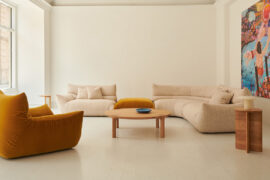
A curated exhibition in Frederiksstaden captures the spirit of Australian design
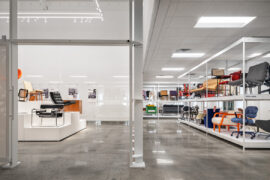
The undeniable thread connecting Herman Miller and Knoll’s design legacies across the decades now finds its profound physical embodiment at MillerKnoll’s new Design Yard Archives.

The Australian Passivhaus Association (APA) has released a guide outlining the process for achieving the international Passivhaus Standard, providing clarity on appropriate use of the term and the legal risks of incorrect assertions.

“The primary objective is to mitigate noise at the source” – this comment piece by Daniele Albanese, Head of Acoustics APAC, Cundall delves into how this pre-emptive solution can be soundly integrated.
The internet never sleeps! Here's the stuff you might have missed
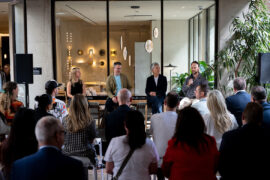
The CBD and South Melbourne Precinct promises a day of design experiences that balance movement, wellbeing, innovation and hospitality.
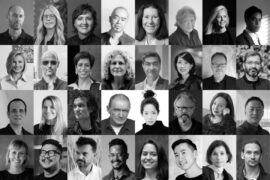
With the 2025 INDE.Awards now over, it’s time to take a breath before it all begins again in early December. However, integral to the awards this year and every year is the jury – and what an amazing group came together in 2025.
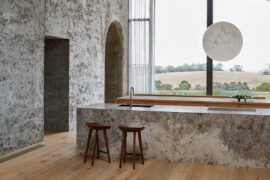
The INDE.Awards 2025 has named House on a Hill by Leeton Pointon Architects and Allison Pye Interiors as the winner of The Interior Space category, presented by Tongue & Groove. This multigenerational country home on Bunurong Country redefines residential architecture and design with its poetic balance of form, function, and sanctuary.